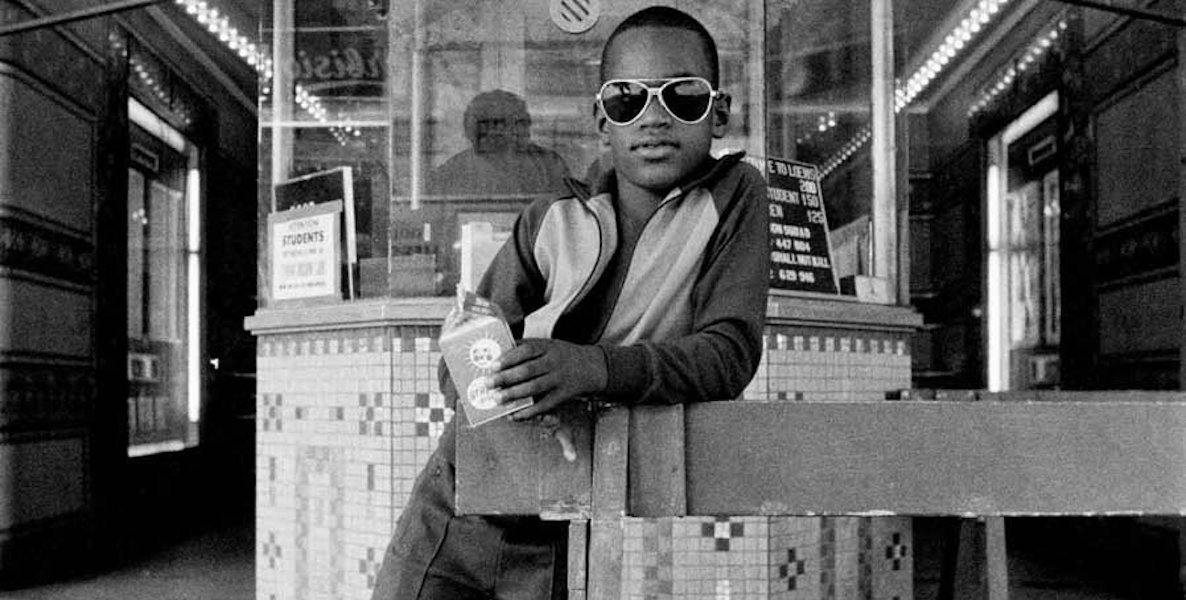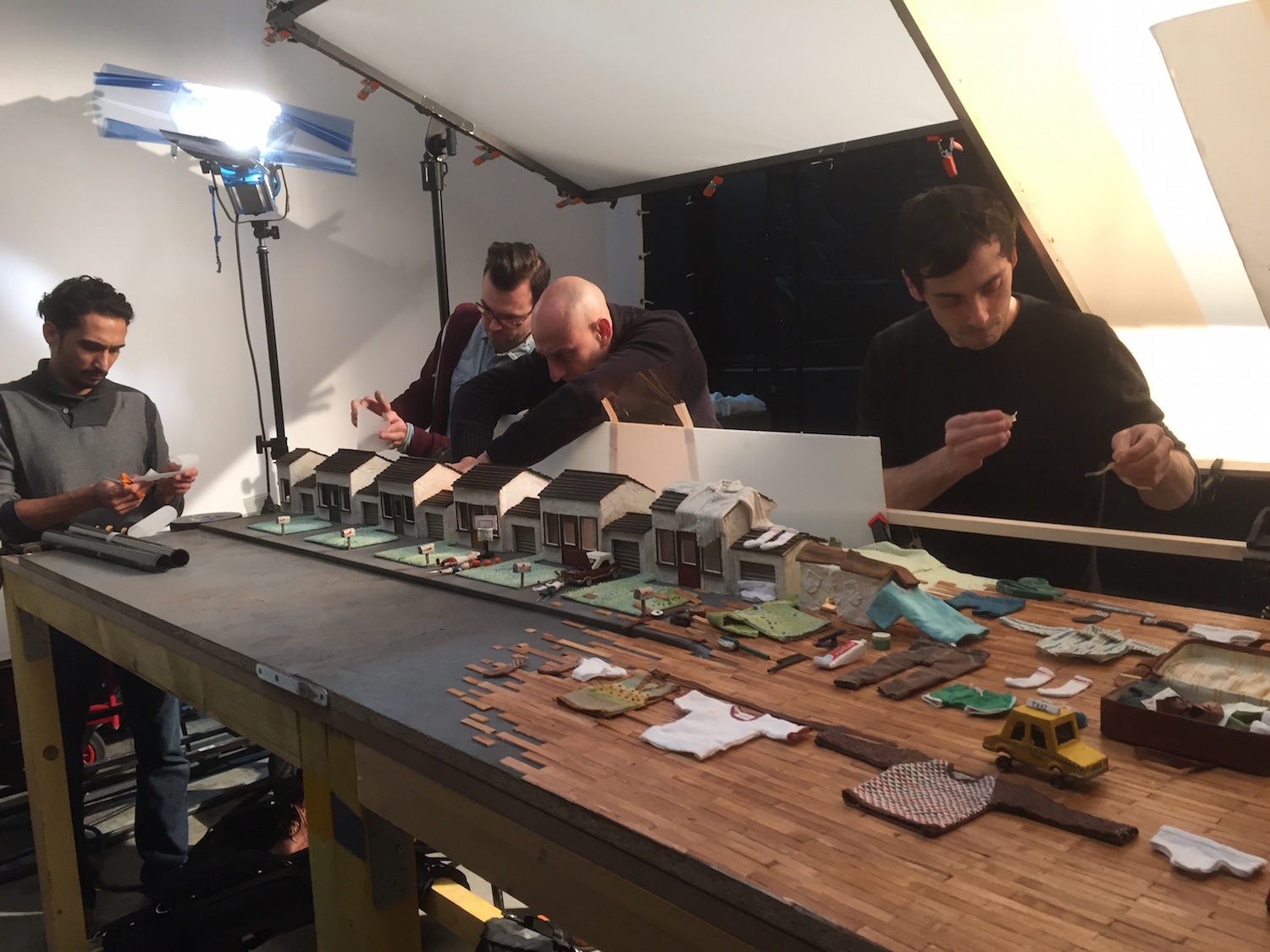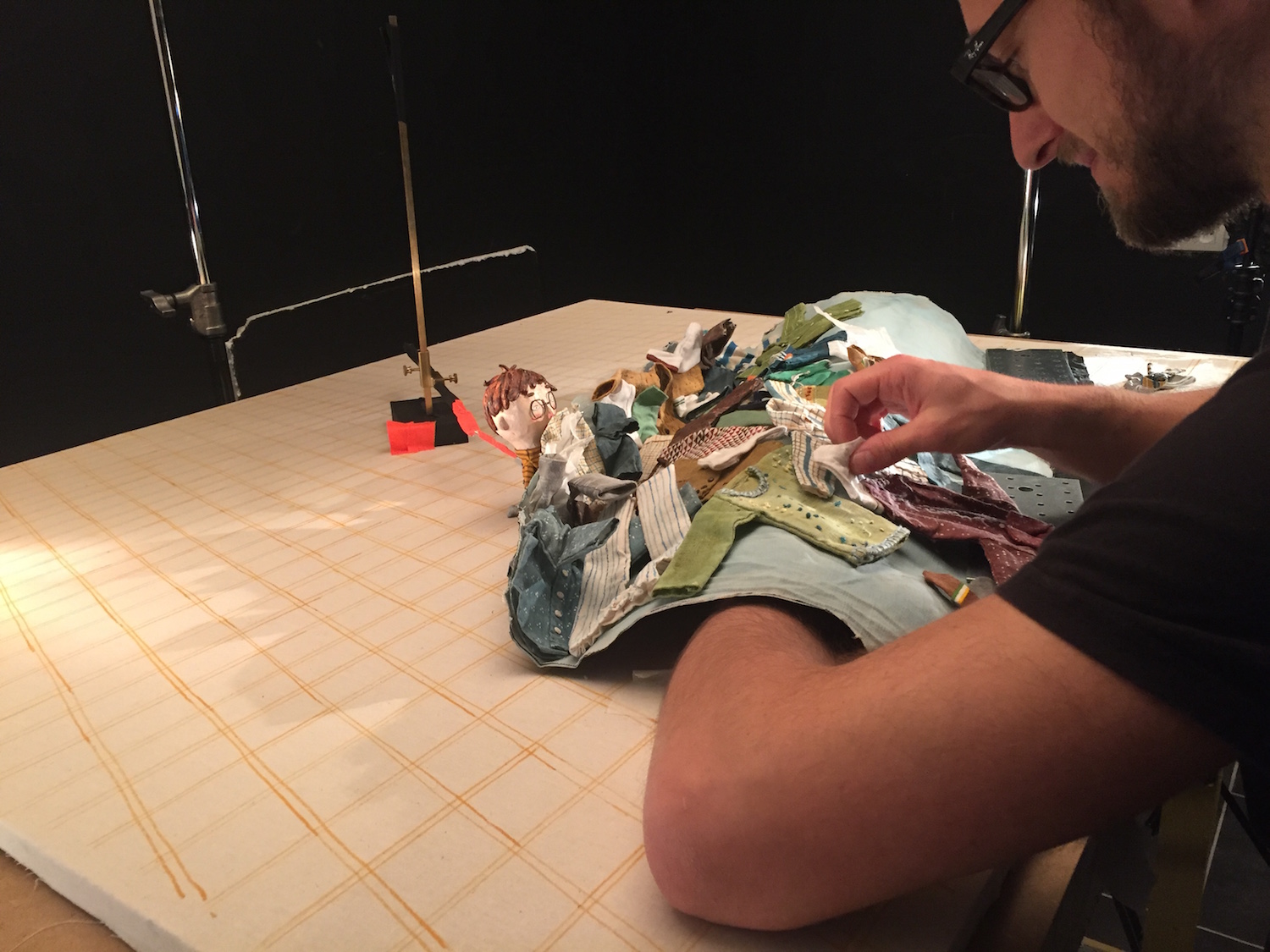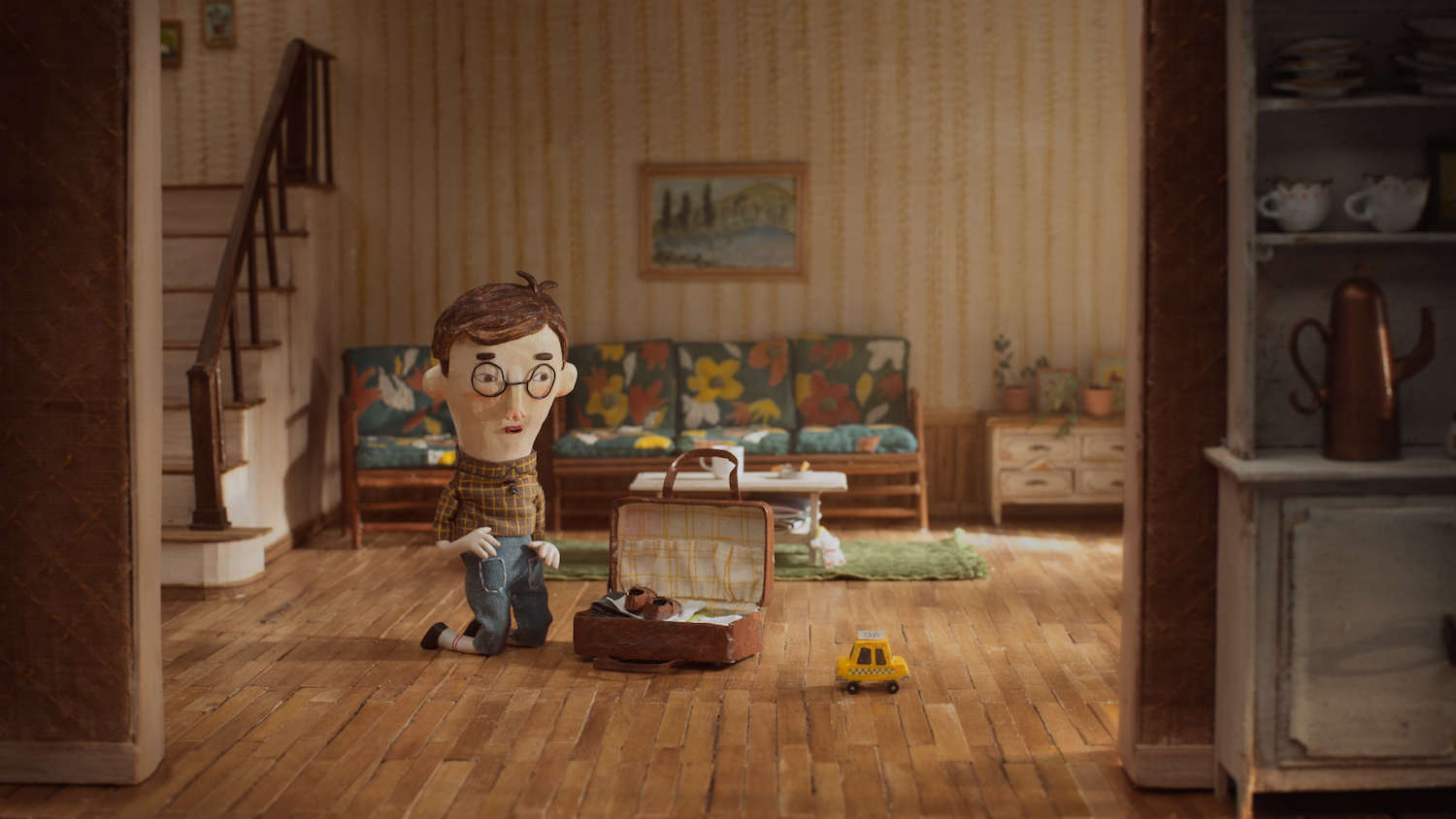Complex Human Relationships on the Screen bring a Baltimore-based Animated Short to the 2018 Academy Awards by Rachel Bone
Frankly, it’s about time Baltimore gets some attention at the Academy Awards. This year, not only is our fine city represented as an Oscar-worthy locale (Guillermo del Toro’s “Shape of Water” – nominated for 13 awards – is set in Baltimore), but more notably as home base for husband-wife animation duo Tiny Inventions (Ru Kuwahata and Max Porter), whose animated short, “Negative Space,” is up for best animated short. The film is based on a poem by Ron Koertge, and explores the awkward bonding of a father and son, over the art of packing the perfect suitcase. The five minute film is at once poignant and darkly funny, and resonates with an audience broader than just men and their fathers. Complex human relationships are not limited to any one gender.
“Negative Space” was created almost entirely by hand, its magically tactile props and parts shot with stop motion animation — meaning it was photographed frame by frame, moving each piece by hand in painfully small increments to create the illusion of movement.

On a good day, if everything had been set up the night before, the team would animated an average of one to two seconds a day. Save for a pair of missing eyebrows here, or a color correction there, the finished product is largely untouched by computer graphics. That style is a change from the even mix of hand and computer work in the couple’s previous films, but for this story, so much about fabric, and tactile things, the two knew they’d want everything to be made by hand.
“There is so much memory connected to the clothing and objects,” says Kuwahata. As the designer and creator of the characters and props, “you needed to see fabric bending, and texture to exaggerate the senses. The story is so personal. Computer graphics just wouldn’t have worked.”
The two admit that straying from the consistency of computer graphics challenged their obsessive perfectionist sides. With stop motion, once a scene is animated, you have to take it or leave it. Porter — in charge of cinematography and post-production — had to surrender control over aesthetic corrections, as well as having to work with a team of animators for the first time.
“In personal projects, we’re not used to having anyone animate but us. We were nervous,” says Kuwahata. “How do we translate exactly what we want, without sounding crazy? We spent a ton more time than normal on pre-production, so we could coach people, and create a visual system everyone could understand and follow.”
Ru Kuwahata immigrated from her home in Japan to attend high school in California in 1998, That overwhelming experience is the subject of Tiny Inventions’ next film — a feature— which was just chosen for a competitive development program at Torino Script Lab in Italy. As an Oscar nominee, the film’s nomination has the weight of representing multiple underdog groups. It is a celebration for independent, small budget film, for women in film, for France (who largely funded the project), and Japan (Kuwahata is still a citizen).

Kuwahata is, notably, the first Japanese woman nominated as a director for any academy award, a fact that has made her current existence a full-time job responding to excited Japanese media, which is attention she never expected.
“Nobody watches the oscars for animation, especially the shorts, so people are excited and confused at the same time. They keep asking me ‘is that award at the actual Oscars? Is that even televised?’” (Yes, and yes).
“We’re kinda like the boogers of the Academy Awards,” laughs Kuwahata, whose parents woke up in Japan the morning after nominations to their daughter’s face and name on every major television news channel, being celebrated like a national hero. Kuwahata doesn’t always love the attention, but is acutely aware that for this brief moment, she is representing women and minorities in film, and wants to rise to that challenge.
“I am slowly realizing… it is a big deal. I’m representing the underdogs. We went to the Oscars luncheon last week, and they took a photo of everyone. I looked at it later and thought, ‘that’s a lot of white men.’ I could count the minority women in the room on one hand.”

Kuwahata and Porter have collaborated for over a decade in their signature stop-motion style on both commercial and personal work, after meeting at a commercial animation studio in NYC. “At some point, working for a large company you wonder ‘where is my creative energy going?’ And we said to each other ‘Let’s just try our own thing,’” remembers Kuwahata.
Find and harness that creative energy they did. “Negative Space” has already won over 52 awards throughout 137 festivals worldwide. Now both MICA professors, Kuwahata and Porter also share a studio in Baltimore’s Woodberry neighborhood with a handful of other artists (including filmmaker Albert Birney, whose voice narrates “Negative Space”).
The two found the Koertge poem through social media, and felt immediate connection to it. Porter, because of bonding experiences with his own father, over music, and the feeling there always needed to be a third-party thing to bond over; Kuwahata because of memories of her father, a pilot, and the memories of his regimented packing list for flying, hanging on the wall of her childhood home. Kuwahata began building props and characters in Baltimore, but shooting happened through a fellowship in France, and was shot in four separate places, moving mid-shooting, which meant the handmade sets also had to be designed to break down and travel without damage.

“Negative Space” is not considered the favorite to win. It is competing against big names like Pixar (“Lou”), and – winner at the prestigious Annie Awards last month – Kobe Bryant, whose “Dear Basketball” is a pencil-sketch, rotoscope animation based on a poem written by the athlete himself, about his own retirement. It was animated by a former Disney animator (Glen Keane, famous for his work on Beauty and the Beast, and other Disney mega-hits). With a local basketball superstar and a well-known industry name attached, that film is likely to win the Academy Award as well. But in a year of #MeToo hashtags, and all those #TimesUp pins gracing the bosoms of Hollywood’s most self-congratulatory academy members, one does find oneself crossing fingers for a small-budget, hand crafted film by a minority woman over a love letter to sports, from a man once famously accused of rape.*
In their bright, sunlit Baltimore studio three weeks before the Oscars, Kuwahata is multi-tasking. With the help of a Japanese fashion writer, she finally tracked down a female, Japanese dress designer to wear to the Oscars. If she’s going to be getting all this attention, she wants to fit as many women and minorities into that spotlight with her as physically possible. It’s a search for efficiency not altogether unlike packing the perfect bag.
The 90th annual Academy Awards airs on Sunday, March 4, with Baltimore’s Max Porter and Ru Kuwahata in attendance. Their film, “Negative Space” is currently screening at The Charles Theater as part of the Oscar Nominated Animated Shorts program.
*Porter and Kuwahata refuse to take the bait when I mention this, and say only that they love basketball too, and are in awe of Keane, hoping to meet him and everyone else nominated on the big night.
On-Demand & EST Release (ONS 2018):: Oscar Shorts Live Action and Animation nominees released on iTunes, Amazon, Google Play, Verizon and Frontier, as well as on Television VOD & Pay Per View at https://shorts.tv/theoscarshor










